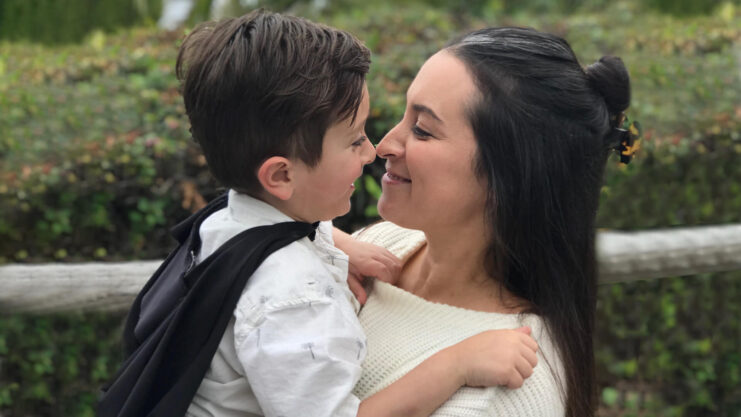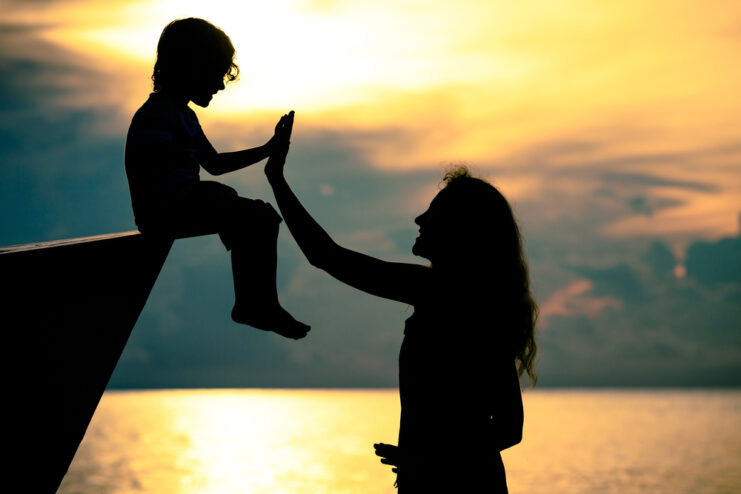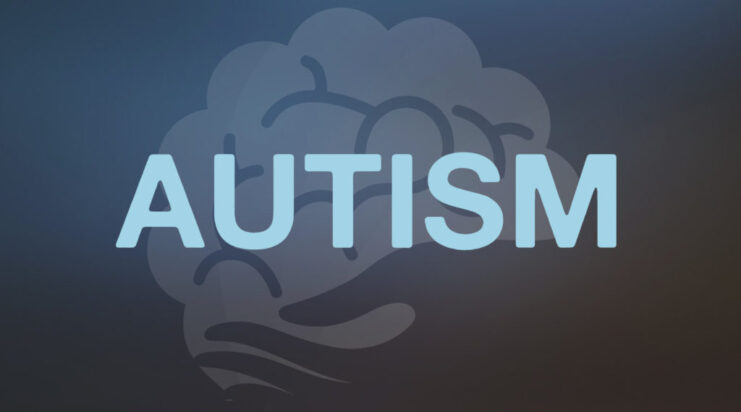When Lucas was just two years old, he began doing 50-piece puzzles. He’d play with cars, but only focus on the wheels going back and forth. His parents, Laura and David of Bay Village, Ohio, noticed that his intelligence level was well beyond his years.
But they noticed other things, as well. Lucas’s communication was lagging behind, and he’d get very frustrated.
“He would hit his head on the ground because he was getting so upset because he was trying to tell me something, but didn’t have the words,” Laura said. “So we called Help Me Grow.”
Help Me Grow is a program based in Ohio that supports and educates parents on comprehensive health and development of their children. They evaluated Lucas to determine if there were any developmental red flags and found that his fine motor and gross motor skills were good, but there were a couple of areas of communication where there could be improvement. Overall, his scores were average, and they determined he was not eligible for services.
As time went on, Laura still had concerns. She began reading books on autism. She called a speech therapy organization and asked what they thought about Lucas’s communication delay, and they said not to worry about it until after he’s three years old. So, Laura and David gave it more time.
Seeking Care
As Lucas entered preschool, he began to exhibit other behaviors. His teacher told Laura and David that it was difficult to get Lucas’s attention, and that he doesn’t listen. But still, Help Me Grow was saying everything was fine with his development.

Laura had been doing a lot of research on autism when one of her friends gave her alternate advice.
“She said, ‘Don’t read the books on autism, read the books on normal development, and see what you see and what you don’t see,’” Laura said. “We began reading those and saying okay, these are typical behaviors, these are things I’m not seeing.”
Lucas didn’t have a lot of markers that indicated autism, but Laura began losing sleep with worry. She knew something was not being addressed.
They set up an appointment with a child psychologist, Dr. Barlow, who recommended doing the Autism Diagnostic Observation Schedule (ADOS). Scoring a 10 or below was typical, and Lucas scored an 11.
Dr. Barlow said Lucas was a mild case, or “on the bubble” of autism.
“I thought I was going to walk out of there devastated and instead I walked out of there relieved because I had an answer finally, after all of these years of, is he okay? Is he not okay? He doesn’t make connections. What are we going to do?”
Navigating the Lifestyle
When Lucas was five, Laura and David found out that his autism is comorbid with ADHD.

“He has severe ADHD,” Laura said. “He presents more ADHD than he does autistic, but he has all of the underpinnings of autism.”
Today, at age seven, Lucas is a very rule-based child. He is comfortable when things are written down so he knows what he should and shouldn’t say or do. Laura even keeps a list of swear words on her refrigerator so that Lucas knows that those are not okay to say. Because that’s what works for Lucas.
Finding a school that worked well for Lucas was a challenge. They started with a seed program in their hometown, then tried Montessori. Next, they tried a private school. But they knew that Lucas really needed services.
Now, they are enrolling him in base schools because it has better access to services.
“You can’t take a kid with severe ADHD and be like, ‘Hey, you’re going to have an appointment after school, after you just broke your entire brain for six hours trying to focus with 30 kids screaming,’” Laura said.
Laura knew that a base school would get the right services and in-person schooling to work with Lucas’s method of learning.
“It’s been quite a journey and it’s been a lot of trial and error, but I think the biggest lesson that I’ve learned through the entire thing is to follow your mama gut every single time,” Laura said. “Throughout this process, I’ve trusted myself more. If you stick with the mama gut, you know exactly what’s good and the rest you’ll work out.”
The Importance of Awareness and Support
For Laura, the biggest help has come from other parents who have children on the spectrum, and learning from them and having a tribe of people to connect with.
“I would tell any mom that is new in their autism journey to find a veteran mom that has a kid significantly older than their child and just listen to everything and take all of the advice you possibly can,” Laura said. “Every autism mom has been through the ringer. They know how to fight the school board to get accommodations. They know how to hack the autism to make sure they’re eating right or that they go to the bathroom.”
One of the biggest challenges is the lack of awareness in society about what autism is and what it means, and how to recognize it. It’s called an autism spectrum because those with autism can be a mild case, like Lucas, or severe cases, and everything in between. Some parents are hesitant to seek help for their children showing mild to moderate symptoms because they believe autism is a disability for every aspect of a child’s life, and there is stigma around that.
“In our case, it’s a difference, not a disability,” Laura said. “The hardest part is trying to explain to somebody outside of our family about Lucas, because, yes, he has an autism label, but he’s not incapacitated. The vision of autism for most people is severe issues all of the time, and that’s not Luke at all. I think the hardest thing is just showing different faces of autism and people understanding that it’s a spectrum.”
Laura explains that some parents are nervous about sending their kids to play with children who have autism, because they’re worried that the autistic kid will get angry and hurt their child.
“The perception of autism is so different than what it actually is,” she said. “I think that’s the hardest part is understanding that, and also the gifts that autism brings.”

Lately, Lucas has been into coding and has been building Roblox games. He’ll have conversations with Laura where he’ll analyze something logically, and help her see something from a different perspective. He may have issues at school where he’ll run out of the classroom because it’s such an intense experience and environment for him, but then he’ll sit next to Laura at home working on coding projects and will stop and say, “I love you, you’re the best.”
“It’s two very different pictures. And it’s hard to explain that to somebody,” Laura said.
In the beginning, Laura found herself telling people that Lucas was “very low on the spectrum” and would find ways to justify who he is and his autism. She did that as a default so people wouldn’t be scared. But as time went on, she let go of her fear and embraced it all.
“The awareness that I have to bring is making sure that people know, and me shedding my assumed guilt, and shame, and anxiety about it, that somebody is going to judge him,” Laura said. “I needed to let go of that to be able to be strong enough to build that awareness by saying, ‘he’s autistic and for him, this is what that means.’”
Now, Laura looks for ways in everyday interactions to bring awareness to autism when the opportunity comes up. The family also participates in autism milestone events and organizations that raise awareness and support for autism.
“Awareness is super, super important,” she said. “And I don’t think it’s there. People still think that Luke’s broken and there’s a judgment there. One in 60 boys have autism. So whether or not people want to pretend they don’t know anybody with autism, I’ve got news for you. You definitely do.”
What You Can Do
Autism is a condition that means something completely different for each person who has been diagnosed. No two autistic individuals present the same way. Learning about autism through organizations such as Autism Society and Autism Speaks are helpful for understanding what autism is and how to recognize signs of autism. Pediatricians, community organizations and child development centers can point you in the right direction if you need resources or if you suspect your child may be on the spectrum.
To help further understanding and raise awareness, show your visible support for those you know are living with autism and let them know you care.

